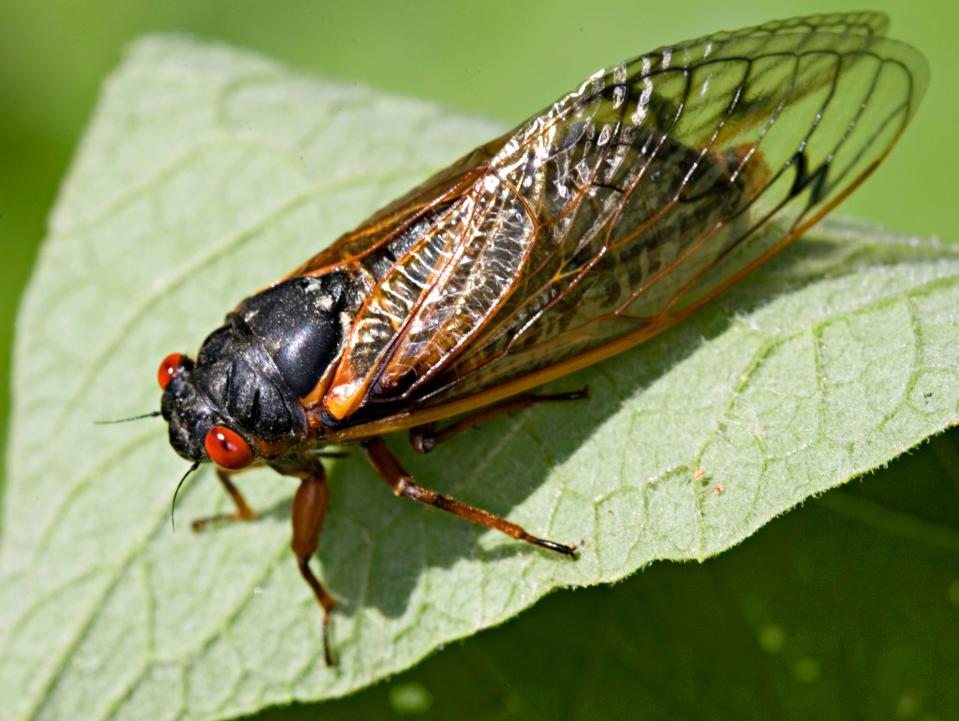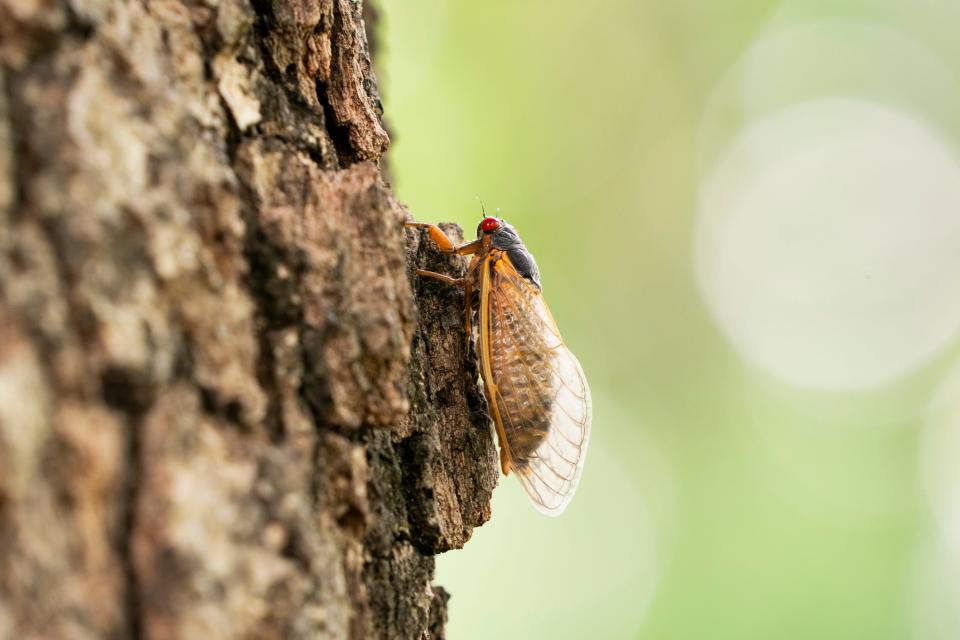When and for how long will 17-year cicadas be around in Wisconsin in summer 2024?
In possibly as little as a week, parts of Wisconsin will be overrun with crunchy, chirping cicadas.
For the first time since 2007, Brood XIII, or 17-year cicadas, will make an appearance in the state.
Wisconsin sees cicadas every summer; some species emerge every year. Others, like the 17-year cicadas, spend most of their lives underground as juveniles, avoiding predators. Although they can be quite a nuisance, cicadas are harmless to people and animals ... in fact, they're even safe to eat.
The emergence of the 17-year cicadas will coincide with the surfacing of the 13-year Brood XIX species in the United States. Brood XIX won't make its way to Wisconsin, but it's expected to emerge in 14 Midwestern and Southeastern states.
Here's when, and for how long, Wisconsinites can expect to see these bugs:

When will the 17-year cicadas emerge in Wisconsin?
PJ Liesch, director of the University of Wisconsin-Madison's Insect Diagnostics Lab, said he can't give an exact date when the cicadas will emerge but expects them to come out in southern Wisconsin during the last two weeks of May.
Currently, southern Wisconsin's median soil temperatures are between the high 50s and about 60 degrees, he said. Soil temperatures generally must exceed 64 degrees to set the stage for cicada emergence.
"So, my suspicion is, looking ahead at weather patterns for the next week or so ... it wouldn't surprise me if we started seeing some activity over the next week and a half as we get closer to June," Liesch said.
Cicada hot spots in northern Wisconsin will likely lag a week or so behind the southern portion of the state, meaning the insects are expected to emerge during the last week of May or first week of June in those areas.

How long will the 17-year cicadas be around in Wisconsin?
Despite their long lifecycle, after they emerge, cicadas only live for about four to six weeks, Liesch said. This means they'll only be around in Wisconsin this summer for just over a month.
"Historically, in Wisconsin, our sightings have been in late May and most of the month of June," he said. "As we get into July, these insects are wrapping up and dying off and disappearing. Then, we won't see them again for 17 more years."
Where will the 17-year cicadas emerge in Wisconsin?
The 17-year cicadas will emerge in five Midwestern states, including Wisconsin, according to the website Cicada Mania. They're also expected to appear in much of northern and central Illinois, eastern Iowa and small portions of northwestern Indiana and southern Michigan.
The insects won't emerge uniformly across Wisconsin. In fact, some counties might not see them at all.
"Some of the maps going around ... give the impression that they're going to be distributed all across southern Wisconsin, which really isn't the case," Liesch said. "It's more like individual pins on a map. They can be geographically very isolated."
Lake Geneva and the Chicagoland area are expected to be cicada hot spots. Meanwhile, the insects haven't been seen in Milwaukee County for "several decades" and aren't expected to emerge there this summer, Liesch said.
"They were previously in more areas, but, with land-use changes, their habitat is probably changing over time. When you think about the long lifecycles of these insects, they spend most of their life underground in the soil as juveniles feeding on tree roots. If those trees are disturbed at any point ― they're cut down to make an agricultural field or a parking lot or a strip mall ― those populations will likely go extinct."
Liesch said this is why cicada populations have declined in populous, developed areas like Milwaukee and Waukesha counties. Meanwhile, they've remained abundant in the Driftless Area and along the Wisconsin River, where trees are plentiful.
Summer 2024 cicada map
The map below shows where Brood XIII 17-year and Brood XIX 13-year cicadas are expected to emerge this summer.
More: The cicadas are coming: Check out a 2024 map of where the two broods will emerge
More: The 2024 cicada invasion: How to save your trees and shrubs from damage
This article originally appeared on Milwaukee Journal Sentinel: How long will 17-year cicadas be in Wisconsin in summer 2024?

